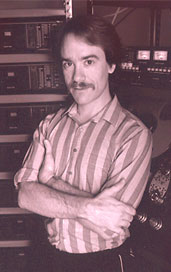


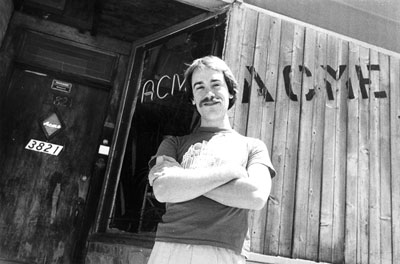
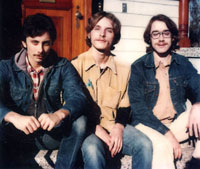 1973: Mike and two partners—John Formanek and J.C. Corbett—agree to start a business called "Acme Recording Studio." They qualify for the first Small Business Association loan ever given to a recording studio. Acme, a 4-track studio, is one of the first independent recording studios in the Midwest.
1973: Mike and two partners—John Formanek and J.C. Corbett—agree to start a business called "Acme Recording Studio." They qualify for the first Small Business Association loan ever given to a recording studio. Acme, a 4-track studio, is one of the first independent recording studios in the Midwest.
As the next few years pass, the other two partners leave but Mike still struggles onward, meeting people and trying to make a living recording musicians and bands.
An alliance with Bruce Kaplan, founder of Flying Fish Records, proves valuable. Mike records dozens of albums for the fledgling folk label. Musicians recording at Acme include Claudia Schmidt, Norman Blake, Jethro Burns, Jim Post, Brian Bowers, Louie Belson and George Duvivier, and Cream bassist Jack Bruce. 
After a few years, Mike upgrades to 8-track. He also begins doing remote recording sessions at clubs and other venues.
1979: Mike flies out to Carson City, Nevada for the second annual national whistling competition. He wins first place in the duet category, whistling with someone he had just met.
early 1980's: Mike starts Clear Cut Cassettes, a real-time cassette duplication company. At the time, the only way to copy cassettes is an inexpensive high-speed method, but Mike feels the need for a higher-quality, higher-cost solution. He teams up with Howard Ganz of Imperial Tape in Santa Monica, CA, whom he meets at an audio convention, and together they research the best way to do it, each starting their own company in their respective cities.
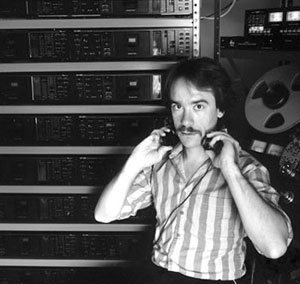 In the end, Mike ends up buying 28 cassette decks, hooking them all together like they are one machine. In this way, he can press "record" on one, and all machines will leap into record, duplicating 28 tapes during the playing time of a single pass. It takes more time, but the quality improvement is unmistakeable. The cassette division slowly gets on its feet.
In the end, Mike ends up buying 28 cassette decks, hooking them all together like they are one machine. In this way, he can press "record" on one, and all machines will leap into record, duplicating 28 tapes during the playing time of a single pass. It takes more time, but the quality improvement is unmistakeable. The cassette division slowly gets on its feet.
June, 1983: Mike's borther Jim rides his bicycle to Chicago from Seattle , and stays with Mike for a few weeks, helping him work a convention. Mike tells him he always has a job at Acme if he wants it.
Summer, 1983: Jump'n The Saddle records "The Curly Shuffle" at Acme. Mike had heard the band play the song in their live show and get great crowd response, so he offers to record and co-produce the song and release it on Acme Records.
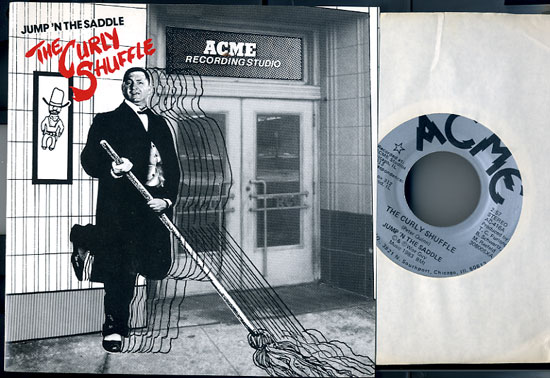
Fall, 1983: Mike starts pushing "The Curly Shuffle" to local radio stations. It is soon the number 1 record in the city, and by November it is the number 15 song in the country.
December, 1983: Atlantic Records signs Jump'n the Saddle to an album deal, and Acme is booked most of December working on the album. Mike does live sound for a few of the band's tour dates, but Atlantic, not hearing any other novelty hit on the album, doesn't really push it, and everyone has to settle for an amazing novelty hit.
Acme is able to go 16-track with the advance money.
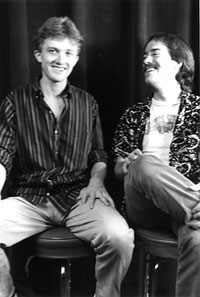 June, 1984: Jim arrives back in Chicago to work at Acme for the summer. He doesn't leave til 10 years later. Jim runs the office and reorganizes the cassette department, and Acme starts to make money. Mike, freed up from worrying about the business end, is able to concentrate on engineering and improving the studio.
June, 1984: Jim arrives back in Chicago to work at Acme for the summer. He doesn't leave til 10 years later. Jim runs the office and reorganizes the cassette department, and Acme starts to make money. Mike, freed up from worrying about the business end, is able to concentrate on engineering and improving the studio.
Over the next few years, Acme invests in a MIDI studio, buys a cassette loader and begins making custom cassettes inhouse, and starts a popular blank cassette retail business enabling musicians to buy small quantities of short cassettes. By 1989, cassettes account for nearly half of Acme's revenue.
Musicians in the studio include Pinetop Perkins, Magic Slim, Dizzy Gillespie, and a host of Chicago blues, jazz and rock bands.
1985: Mike founds EARS (The Engineering And Recording Society of Chicago) with the help of other Chicago engineers. The story goes...while in New York attending the AES convention, he was hanging out with a few Chicago engineers and they realized they saw each other more often in New York than back home. The monthly EARS meetings were born, and they continue to this day!
1988: Acme invests in CD mastering equipment, becoming the only studio in Chicago able to make the special audio master for CD's.
Also, Mike is hired by Columbia College to begin teaching a recording class at the studio on Saturday afternoons.
Fall, 1988: Mike learns he has AIDS.
March 9th, 1989: Mike checks in to the hospital with a bad cold that won't go away. He's diagnosed with pneumocystis, but all looks hopeful. Then after three days he worsens and ends up mostly uncommunicatative in intensive care for seven days.
March 19th, 1989: Mike passes away. A memorial service is held at Chicago club The Metro and over a hundred people show up to pay their last respects--and to play some music.
After March, 1989: Acme's business continues to increase under Jim, spurred on by the popularity of cassettes and the good name Acme had built up. In 1990, Acme buys a building and moves to a much larger location. In 1992, Acme goes 24-track, recorded a Bob Dylan album with David Bromberg (that has never been released). In Fall, Acme is pictured on the cover of Mix Magazine. In 1993, the Rasfeld family sells the business to Goss Industries.
Jim stays on for six months and moves to California in 1994, where he is an art director at Rainbo Records, a CD and vinyl pressing plant. He marries Stacey Portnoy, an ex-Acme employee.
Acme flourishes under the new owner for a few years and with a new influx of money, but the cassette business had peaked and the studio business had changed, and by 2006, Acme closes its doors.
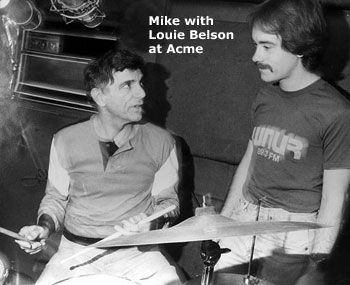

Here's a brief timeline of Mike's life.
Part 1: 1951-1972
Part 2: 1973-1989
Discography

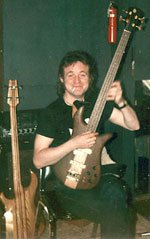
Jack Bruce at Acme

Mike and Dizzy Gillespie at Acme